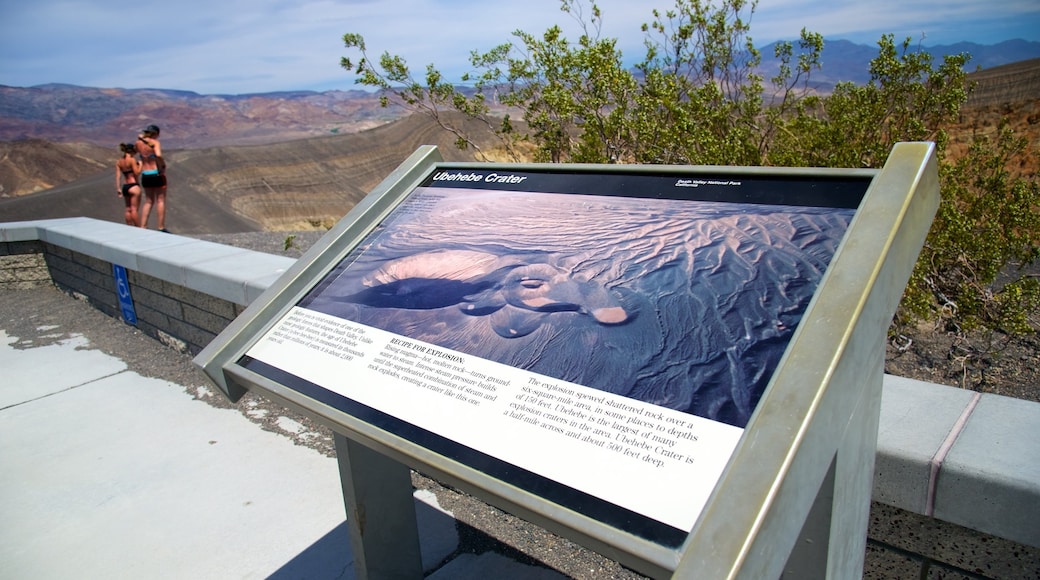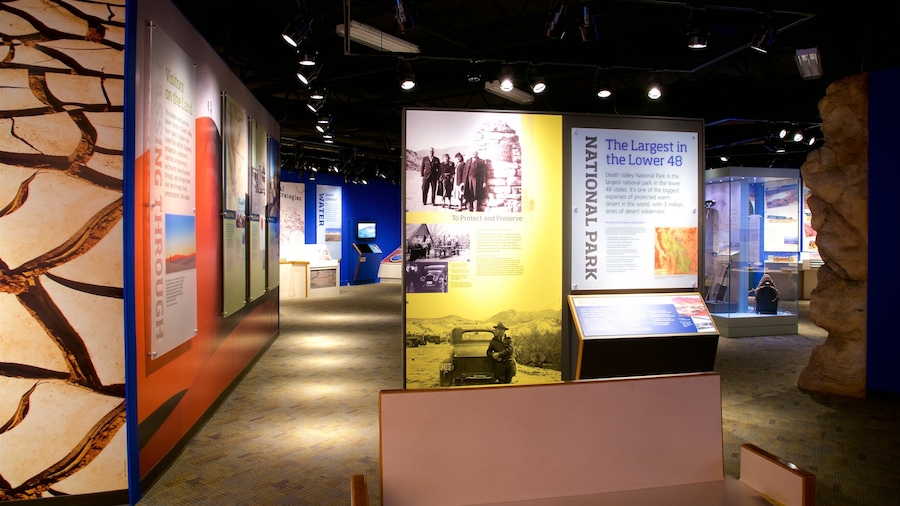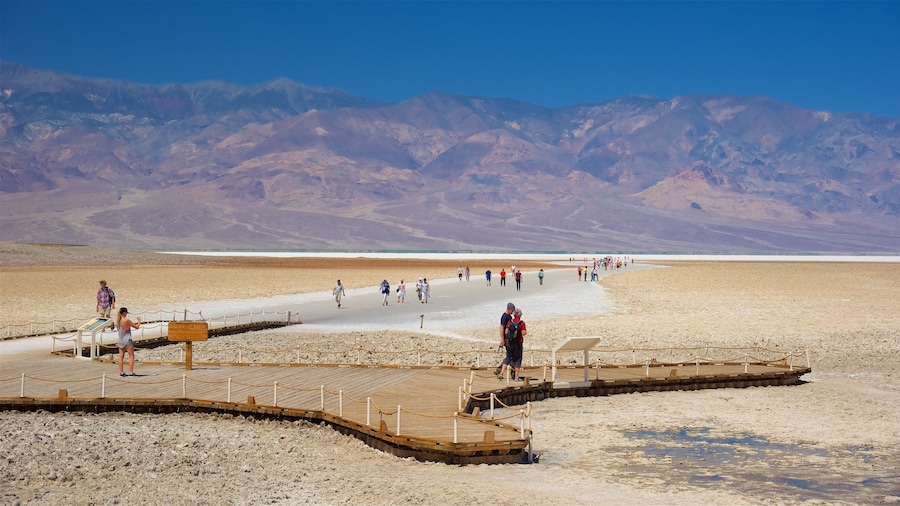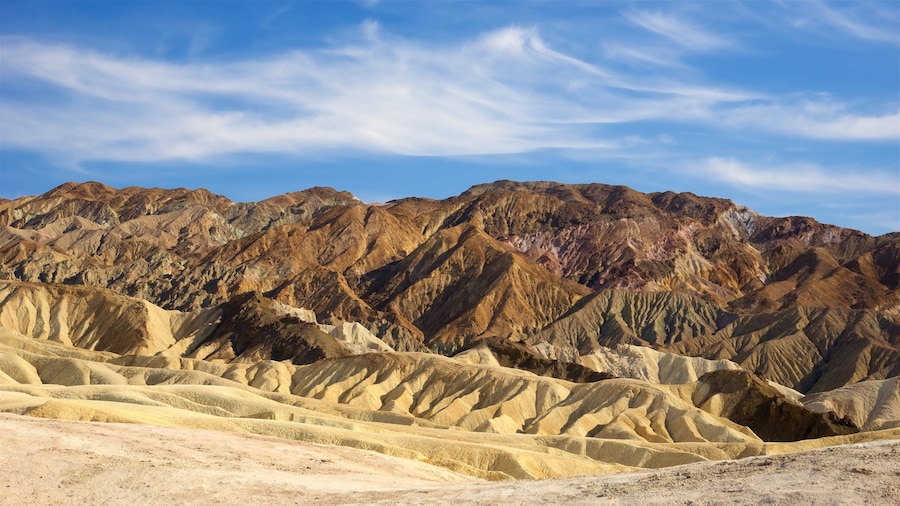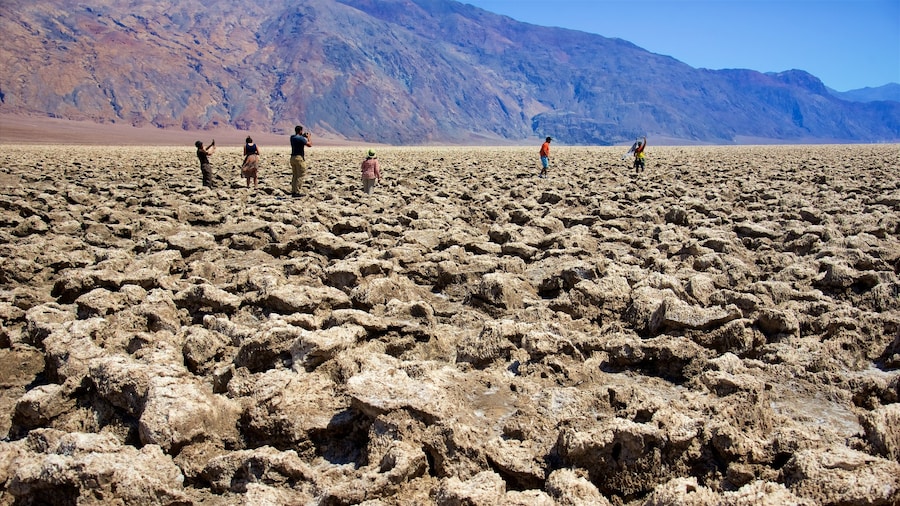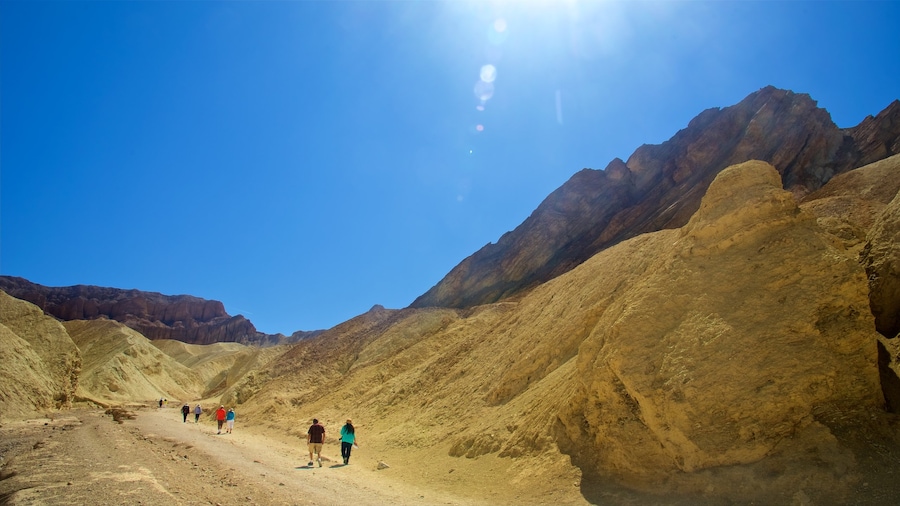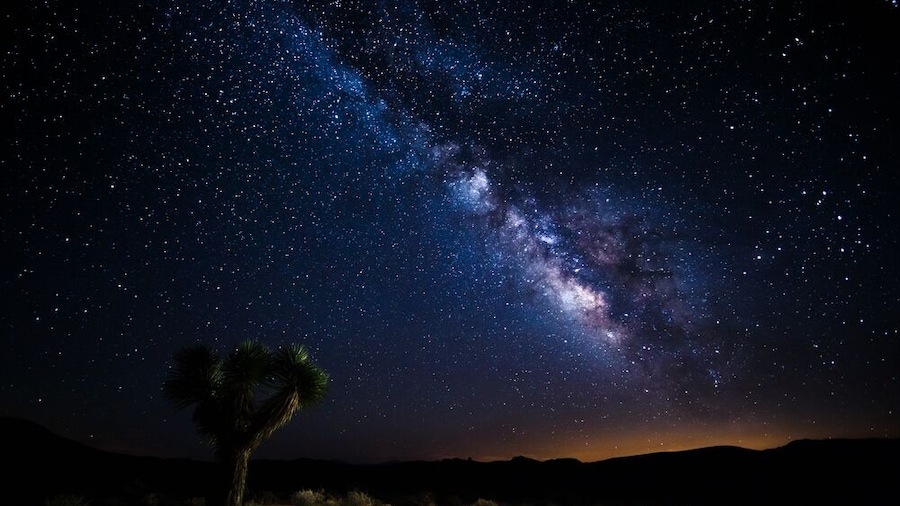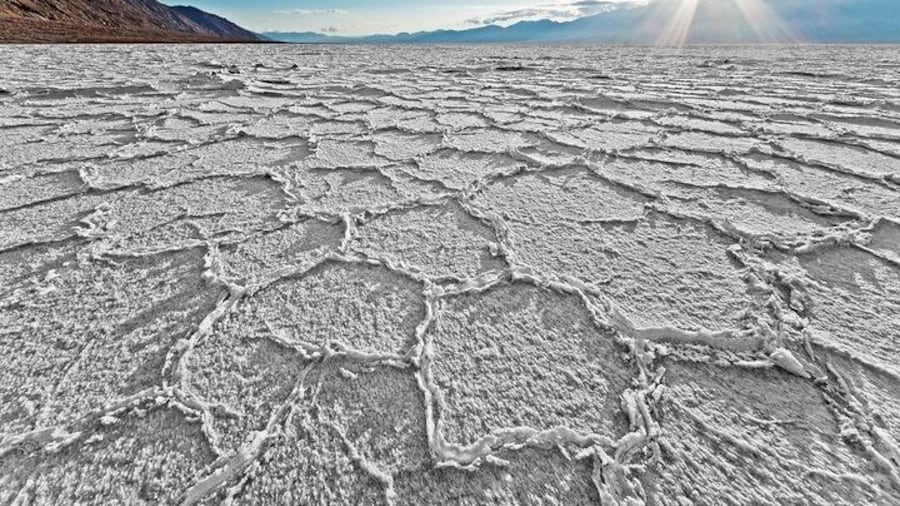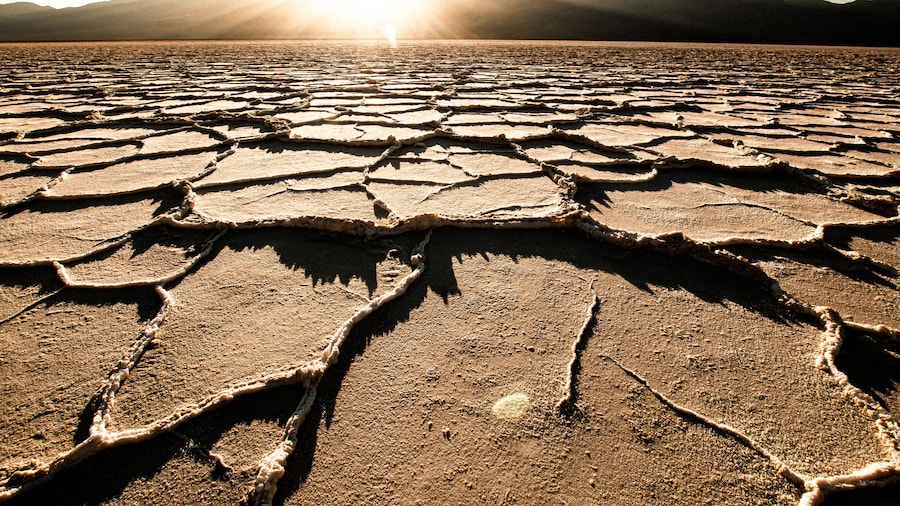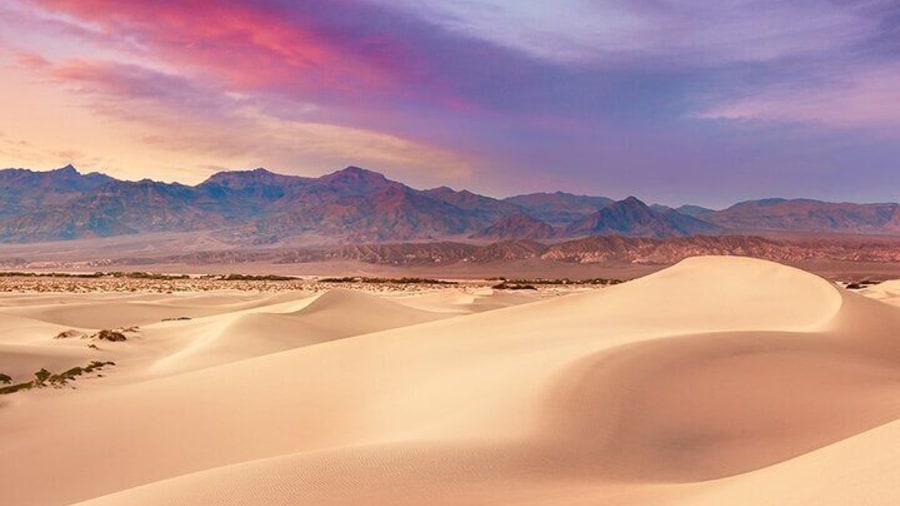Discover the geological wonders of North America’s hottest and lowest national park, packed with raw, wild and untouched landscapes ripe for exploring.
In Death Valley National Park the temperatures can soar to a blistering 120 F (49 C) and the lowest point is marked at 282 feet (86 meters) below sea level. With about 3.4 million acres (14,000 square kilometers) of wilderness, this is the largest American national park outside Alaska. Venture into the park’s interior to experience some of the most mesmerizing landscapes on the planet. Drive, hike or cycle past rolling sand dunes, jagged canyons, rocky deserts, delicate oases and fields of wildflowers.
Begin at the Furnace Creek Visitor Center to learn about the park, explore the small museum and plan your adventures. Drive to Devil’s Golf Course, a wide expanse of rock salt carved by wind into sharp spires, before continuing on to Badwater Basin, a bizarre terrain of salt flats marking the park’s lowest point. Continue your tour along the scenic Artists Drive, a 9-mile (14-kilometer) loop weaving through pink and gold hills.
Stop at Death Valley’s most famous viewpoint, Zabriskie Point. Be amazed by the surreal landscape stretching before you. Arrive at dawn or sunset to witness a fantasy-like swirl of colors and shadows. Zabriskie Point is also the starting point for the Badlands Loop, a popular hiking trail. Stop at Dante’s View, 5,475 feet (1,669 meters) high, which offers panoramic vistas across the Badwater Basin.
Experience the human side of Death Valley at the Harmony Borax Works, a long-abandoned town that once hosted a flourishing borax mining community. Learn more about the park’s original inhabitants and the Timbisha Shoshone American Indian tribe members who still inhabit the region.
Visiting Death Valley needs pre-planning. The Furnace Creek Visitor Center is the best starting point. There is a weekly fee to enter the park. The fantastical land that is Death Valley National Park receives some of the sun’s most blistering rays. Carry plenty of water and sunscreen when exploring.




